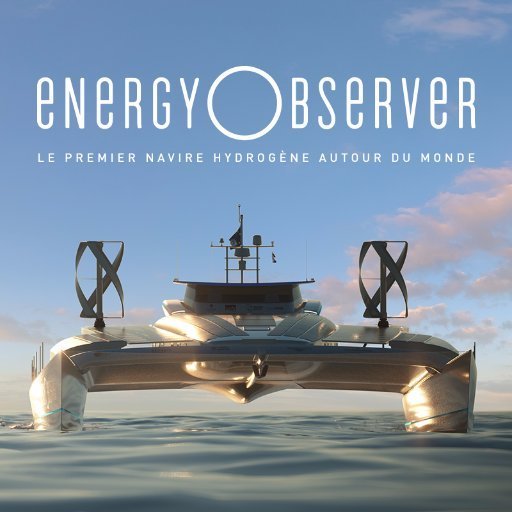

The
Energy Observer, the world’s first boat powered by solar, wind and self-generated hydrogen, is gearing up for its scheduled maiden journey in February.

The €4.2m ($4.72 million) vessel—nicknamed the “Solar Impulse of the Seas”—aims to circumnavigate the globe using only clean power, a feat similar to Solar Impulse 2‘s historic, solar-powered flight around the world that was completed this past July.
The boat will sail for six years around the world as a floating exhibition and clean energy laboratory, with stops in 50 countries and 101 ports of call.
“For the first time, Energy Observer will allow us to explore the oceans without leaving any trace behind us,” Jerome Delafosse, a director and co-captain of the expedition, said in the video.
The multi-hulled catamaran, a former racing vessel that won the 1994 Jules Verne Trophy for the fastest circumnavigation of the world, stands at 30 meters in length and 12.80 meters in width. Its green upgrade is currently in full swing at a shipyard in Saint Malo, France where it awaits installation of 130 square meters of solar panels, two vertical axis wind turbines, two reversible electric motors and electrolysis equipment—all to help produce and store hydrogen onboard.
Rendez-vous demain à 14h30 à @DarwinBdx pour découvrir #EnergyObserver avec Victorien et Jérôme pour l'@OceanClimax pic.twitter.com/t4tp6onrMe
— Energy Observer (@energy_observer) September 9, 2016
“Hydrogen is not a fuel but a way of storing energy,” Delafosse told Tribune de Genève. “Instead of batteries, we fill high-pressure hydrogen tanks and the hydrogen can power our fuel cell and generate electricity.”
The ship will also be the first in the world to produce hydrogen on board through desalination of sea water, according to ENSTA Bretagne.
All this green technology onboard will allow the boat to power itself indefinitely with emission-free energy.
As Agence France-Presse writes:
“We are going to be the first boat with an autonomous means of producing hydrogen,” says Frenchman Victorien Erussard, who is behind the project—confidential until now—with compatriot Jacques Delafosse, a documentary filmmaker and professional scuba diver.
The plan is for the boat’s batteries, which will feed the electric motors, to be powered in good weather by solar and wind energy, explained the 37-year-old merchant navy officer.
“If there’s no sun or wind, or if it’s night, stored hydrogen—generated by electrolysis powered by the solar panels and two wind turbines—will take over,” he said.
As a result, the vessel’s trip will not use any carbon-emitting fossil fuels, as is the case for 96% of boats today.
Port of LA to Open World's First Off-Grid Terminal Powered Entirely by Renewables – EcoWatch https://t.co/NjSAqwNVUw @REAssociation
— EcoWatch (@EcoWatch) July 22, 2016
The project was designed in partnership the research institute CEA-Liten in Grenoble.
“Energy Observer is emblematic of what will be the energy networks of tomorrow, with solutions that could even be used within five years,” CEA-Liten director Florence Lambert said. “For example, the houses of tomorrow could incorporate a system of hydrogen storage, which is produced during the summer months and then used in the winter.”
Erussard says in the video that the vessel stands out from others “in the fact that it will operate using a mix of renewable energy, wind, solar and water.”
“The aim is actually to achieve energy self-sufficiency,” he added. “This self-sufficiency can be transferred to land applications such as buildings, schools, hotels and so on.”

 233k
233k  41k
41k  Subscribe
Subscribe 